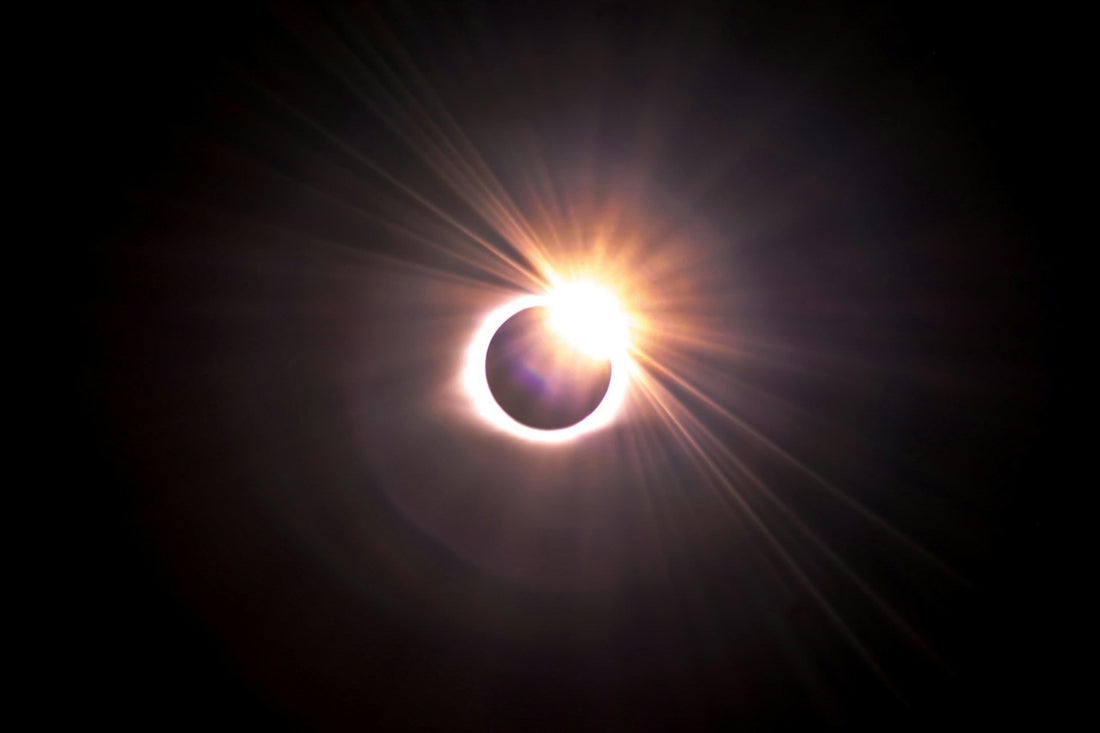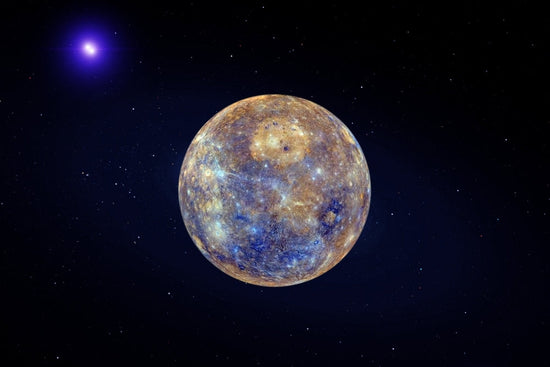The moon, the sun, and the Earth line up in the sky for a few weeks each year and intersect during a time period called eclipse season. Always appearing in couplets of solar and lunar eclipses, these events inspire as much awe as they do transformation.
Eclipse seasons occur twice a year: once in the spring, and again in the fall. In the world of modern spirituality, these short weeks are said to spur unpredictable and rapid change, illuminating hidden truths and planting the seeds for new storylines to grow.
As you navigate the emotion, upheaval, momentum, and magic of eclipse season, allow yourself to embrace the unexpected and travel with your instincts. The oncoming changes are likely to lead you into a more fulfilling, nourishing life—yet this may require leaving your comfort zone and leaping toward the unknown.
Read on to learn about the different types of solar and lunar eclipses and how to use their energy for your personal growth.
Header image by Justin Dickey.
Solar Eclipse Astronomical Meaning

Photo by Jongsun Lee.
A solar eclipse occurs when the moon passes between the sun and the Earth, blocking out the sun from the view of the Earth within a certain range. This only takes place at a new moon phase.
There are three distinct types of solar eclipses: total, partial, and annular eclipses.
During a total solar eclipse, the moon, the sun, and the Earth appear to be in perfect alignment. The path of the moon precisely intersects that of the sun and covers it completely during the event, creating an effect of lowered brightness across the world akin to dusk or dawn. At this moment of totality, it is safe to gaze directly at the sun. (Click here to review NASA’s recommended safety tips for viewing solar eclipses.)
However, totality is only visible to those located within the center of the moon’s shadow. Those located outside this range will only experience a partial eclipse.
During a partial solar eclipse, our three celestial bodies are in imperfect alignment. The moon crosses the sun’s path with less precision, appearing to cover it only partway. This forms the sun into a crescent and casts sickle-shaped shadows over the Earth.
During an annular solar eclipse, the moon intersects the sun’s path perfectly, yet its orbit has brought it farther away from the Earth, so it does not appear large enough in the sky to block out the sun completely. This leaves a ring of fire around the moon.
Just like a total solar eclipse, those located outside the center of the moon’s shadow will only experience a partial eclipse.
Solar Eclipse Spiritual Meaning

Photo by Andrew Preble.
A solar eclipse amplifies the energies of the new or dark moon, a common period for withdrawal, introspection, and setting new intentions for the weeks or months ahead.
The sun tends to symbolize clarity and how we project ourselves. Eclipsed by the moon, a symbol of the deep inner world, these events can pull us into meaningful connection with ourselves as we brave the waters of our inward realm.
A solar eclipse can also catalyze momentous changes in our lives. This blocking of the light is disruptive and rattling—often able to shake loose the deeper truths that we have buried within ourselves. Yet, this break from the status quo allows us to look over the details of our lives with a new perspective. As we contend with the issues or desires that surface during an eclipse, we have an opportunity to find fresh ideas and insights about who we want to be in the world and how we want to move forward on our paths.
This might be a time to reconnect with what makes your life feel exciting and bright. Use the energy of a solar eclipse to rest, reflect, let go of old habits, and set your sights toward new horizons.
Practices for a solar eclipse: divination (try reading cards); manifesting with fire; going on an adventure
Lunar Eclipse Astronomical Meaning

Photo by Brian McMahon.
A lunar eclipse occurs when the Earth passes between the moon and the sun, casting its shadow over the moon. This can only occur at a full moon phase.
There are three distinct types of lunar eclipses: total, partial, and penumbral eclipses.
During a total lunar eclipse, the moon, the sun, and the Earth appear to be in perfect alignment. The moon moves fully into the Earth’s umbra (the inner part of its shadow), where it can be illuminated only faintly by sunlight passing through our atmosphere.
On the spectrum of visible light, blues and violets have shorter wavelengths, while reds and oranges have longer wavelengths. Since these longer wavelengths are the only ones reaching the moon during this event, the moon will appear red or orange during a total lunar eclipse—its color intensifying with the volume of dust or clouds in Earth’s atmosphere.
During a partial lunar eclipse, our three celestial bodies are in imperfect alignment. The moon moves only partway into the Earth’s umbra, so only a portion of its surface is engulfed in shadow during the event.
During a penumbral lunar eclipse, the moon moves only into the Earth’s penumbra (outer shadow). As NASA says, you’ll miss this eclipse if you don’t know it’s happening! Because this part of the Earth’s shadow is so light, the moon will appear just a shade or two darker than normal.
Lunar Eclipse Spiritual Meaning

Photo by Roger Starnes Sr.
A lunar eclipse amplifies the energy of the full moon, a period of power and completion, fruition and celebration, self-care and well-earned rest.
The moon represents our subconscious, drawing us into a realm of emotion, intuition, magic, and fear. When full, her light reflects something from this darker, inward space becoming fully illuminated. This moon phase calls our attention to a steadfast truth within ourselves, and urges us to incorporate its voice into how we’re building for the future.
As such, many astrologers interpret a lunar eclipse as the final ending to a particular chapter in our lives, able to reveal information previously unknown to us about the situations we’re in. This event is a point-of-no-return. Our world is expanding, and it is time to embrace the turning of the tides.
This might be a sentimental, emotional event, yet it brings with it the rejuvenating start to something new. Use the energy of a lunar eclipse to feel your feelings, nourish yourself, and prepare for the next journey to begin.
Practices for a lunar eclipse: cleansing; divination (try reading cards); a ritual bath; making art






4 comments
Oh I loved reading this! We were really close to totality where I live and I got to experience it with my kids.
Thank you for this – great read :)
Thank for this post!
Thank you for this!